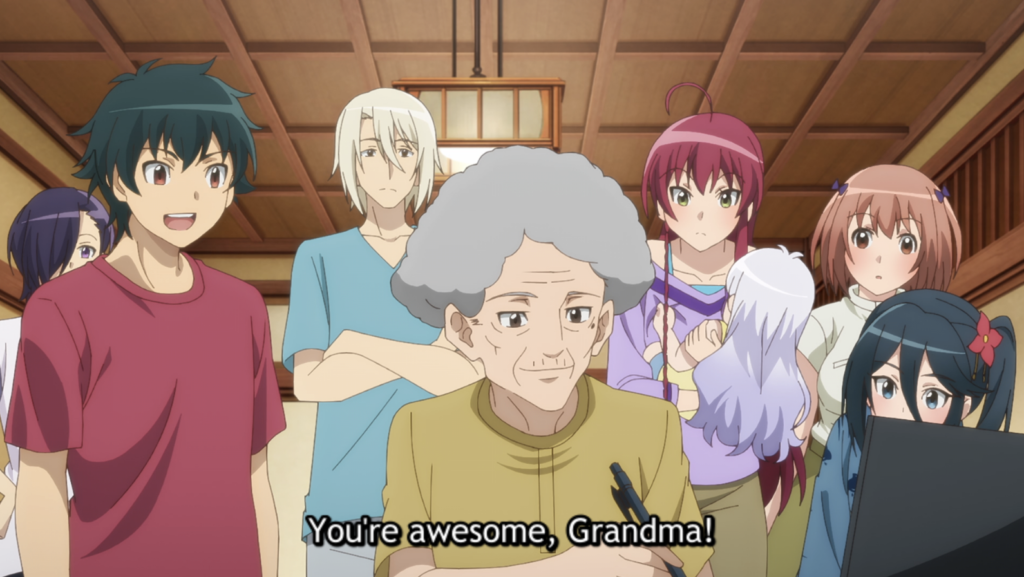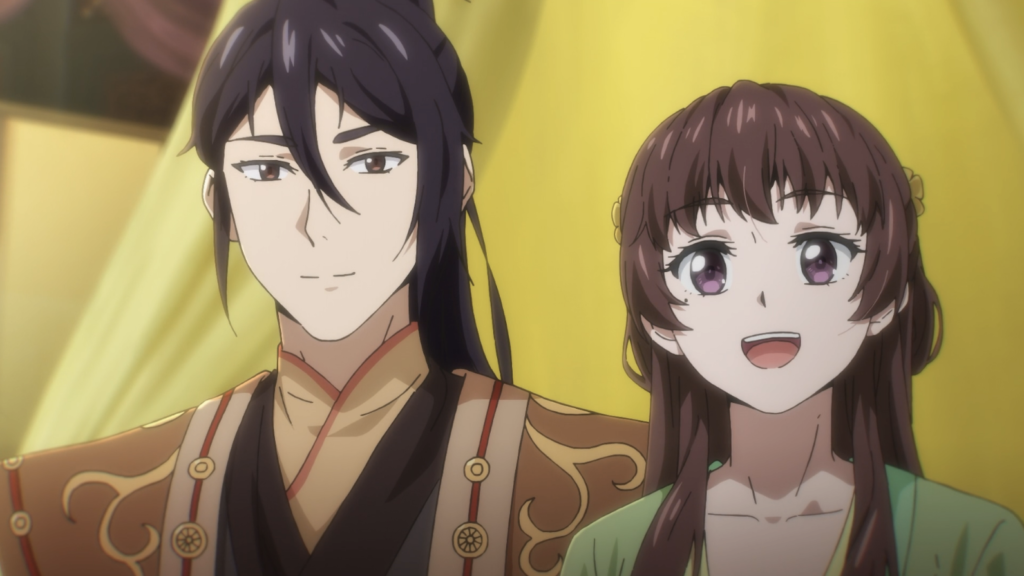Summer 2022 Overview – Yeah! or Meh?
Summer 2022 has been…(a) relaxing (b) good in parts (c) underwhelming (delete as appropriate). Or the calm before the storm of Fall/Autumn 2022 releases breaks in October?
With almost all the new releases now to be found on Crunchyroll – with some honourable exceptions on HIDIVE and Netflix (not so much) – one problem with reviewing the Summer 2022 releases is how well spread-out they’ve become with some already having finished (Phantom of the Idol, Yurei Deco) while others have a few more episodes to run (Fuuto PI, The Maid I Hired Recently is Mysterious). Gone are the days when the writers at Anime UK News could finish watching their favourite series of the season and pool their thoughts in an article in a single week; it’s all over the place at the moment!
Demelza
For me, the Summer season has proven to be one of the best this year so far. Not only did DanMachi finally return to our screens, but several of the anime original shows managed to deliver on their initial promises while the adaptations of well-liked manga retained the charm of the originals, pleasing more newcomers and existing fans alike. Or maybe that’s just me, who has a relatively low barrier when it comes to these things and quite enjoys the isekai we’re delivered season after season.
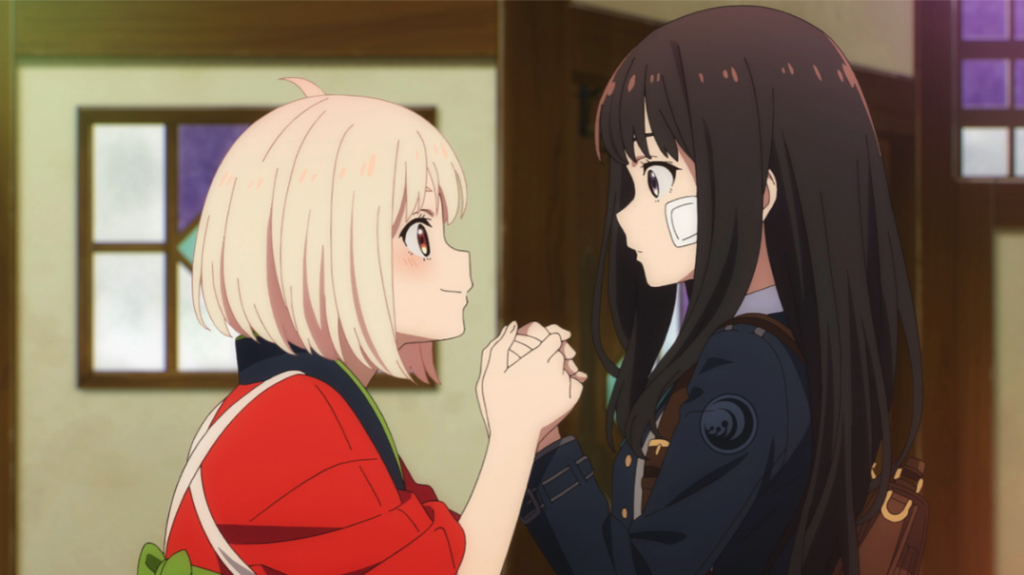
However, readers may be pleased to learn that it was not an isekai that ended up my favourite show of the Summer but a newcomer known as Lycoris Recoil. In the first episode, we see a mission go wrong and Takina Inoue who disobeyed orders transferred to Café LycoReco, where she’s partnered with Chisato Nishikigi. The two are complete opposites in terms of their personalities and even their approach to missions – Chisato uses non-lethal rubber bullets to take down her targets whereas Takina is more than happy to use live rounds with the intent of doing some real harm. Takina wants to prove herself and return to HQ as soon as possible, but the more time she spends with Chisato and the others at the Café, the more her feelings begin to change. When the peaceful days in Japan come under threat from a terrorist, Takina must work with Café LycoReco to protect those around her.
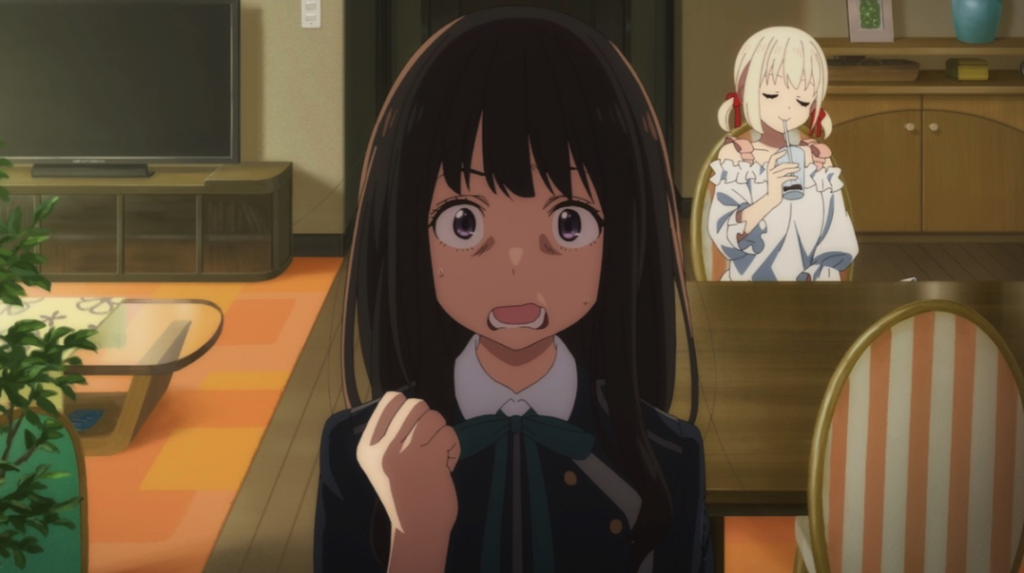
Lycoris Recoil is a story about terrorism, about peacekeeping and in many ways also a coming-of-age story. Chisato and Takina are both young adults with their fair share of scars and hurtful experiences behind them which have moulded them into the total opposites we see here. But the fact they’re so different from one another is what makes their blossoming friendship so easy to root for. It’s clear that Chisato’s bright and optimistic personality begins to rub off on Takina fairly quickly and although she finds herself exasperated more often than not with her free-spirited partner, maybe it’s exactly what Takina needed.
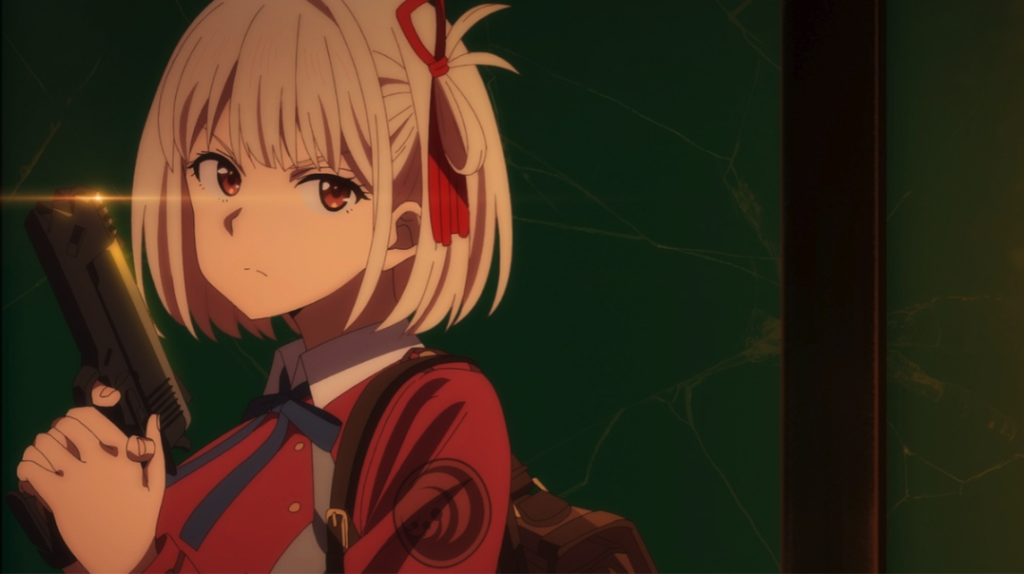
The writing behind this series is certainly one of its strong points. It may not be perfect (the whole idea of a group of powerful women who go around keeping Japan safe from the shadows isn’t exactly realistic!), but it’s easy to get invested in the relationships between all the cast – not just Chisato and Takina. Even the motivations of the head of the terrorist organization are relatively well thought-out, at least to the point of not just doing evil for the sake of it. There are enough twists and turns to keep you tuning in every week to see what’s next too. Couple this with some excellent animation from studio A-1 and you have what could easily be one of my favourite series of the last five years.

I spent every week worried that Lycoris Recoil would falter somewhere down the line, it just seemed too good to be true. But now I can sit here and happily say that it never did put a foot wrong. The story is left open enough for a second season (or even a spin-off) and with how well it and its light novel side story have been selling, maybe we will see more of it. But for now, I’m more than happy with what we’ve seen and highly recommend it to anyone even remotely interested in its premise.
The other series I found myself fond of until the end of this season was Call of the Night, which was adapting the manga by Kotoyama. As I briefly mentioned in the Summer 2022 Preview article, I find the beginning of the series fairly underwhelming as it tries to be a comedy between middle-school protagonist Kou and the vampire he becomes friends with: Nazuna. But once we get to the midpoint of the anime, that changes, more characters are brought in and Kou begins to explore what it actually means to be a vampire and if his desire to become one is misplaced.
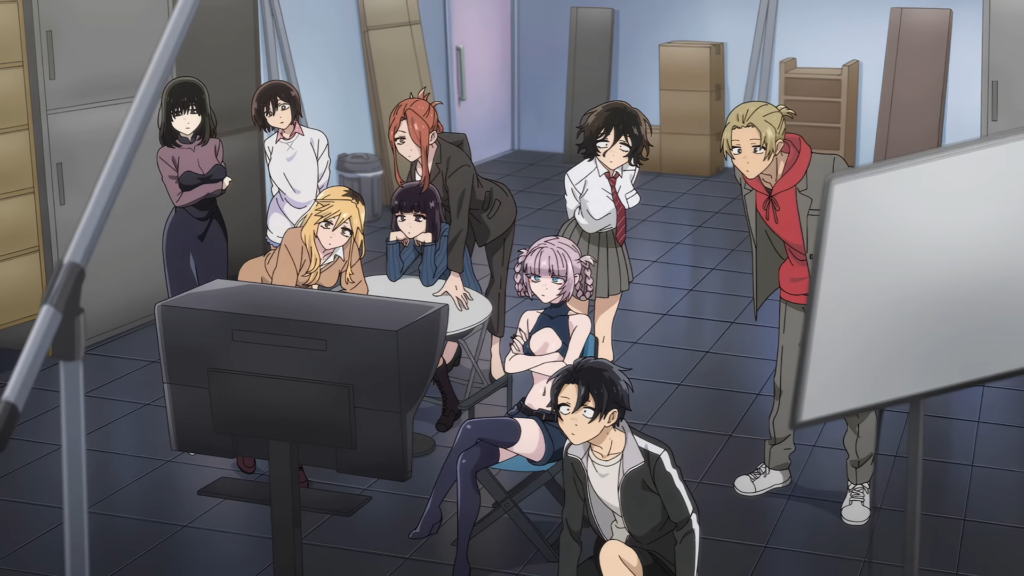
Thanks to Sora Amamiya (Aqua in KonoSuba) playing Nazuna and some excellent animation from studio LIDEN FILMS, this quickly became one of the shows I found myself most looking forward to week after week. Thanks to some involvement from former SHAFT staff, the anime has a really stylish look to it and a flare for unusual framing of pivotal scenes. Where director Tomoyuki Itamura used to go overboard with the whacky animation for Monogatari (in my opinion at least), here it’s reined in to the point of being different but not overwhelming the viewer, nor taking away the charm of the original work.
I am a little disappointed that there hasn’t been a second season announced, particularly with plenty of source material left and my favourite character (Anko Uguisu) only having a few episodes of screentime. I’m not convinced this one works as a standalone series with so many unanswered questions, but to the team’s credit, they did move things around a bit storywise for that final episode to create as satisfying an ending as you could get out of the story the way things stand. Hopefully, this won’t be the last we see of it!

Speaking of series that need a second season… Black Summoner also continued to be a fun isekai adventure right up to its ending, but also clearly ends right in the middle of a major arc. Since I read the light novels (available from J-Novel Club) I already know where the story is going and having seen how well studio Satelight adapted the series I’d love to watch more. It’s certainly not going to blow anyone away, but it was enjoyable.
Call of the Night is available on HIDIVE while Lycoris Recoil and Black Summoner are both available on Crunchyroll.
Rui
For me, Summer 2022 brought with it one of the most disappointing anime seasons in recent memory, to the extent that I am struggling to find anything positive to say. The much-awaited sequel to The Devil Is A Part Timer! came completely bereft of the charm of its excellent first season, which felt fresh and entertaining back when it came out in 2013. 2022’s sequel, however, was an uninspired, cheap-looking revisitation which fell back on typical slice-of-life tropes so heavily that I couldn’t but fixate on the lacklustre designs. There was hardly any time spent on cool demonic nonsense or developing the more interesting characters; even the series’ signature fast food restaurant antics were replaced by theme parks, summer beach houses and other copy-pasted settings from a dozen other shows. Perhaps the source material wasn’t all that good in the first place and it was the production team behind the first anime series which elevated it above the competition? It was sad to see one of the most appealing ‘reverse isekai’ titles limping along so tiredly and it set the tone for much of the rest of this season.
I ended up dropping most of the shows I tried out within the first couple of episodes, and other sequels weren’t immune. The first season of Rent-a-Girlfriend was enjoyable for what it was, an attractive-looking romantic comedy with a flimsy premise, but the second was just more of the same done worse, with even less time devoted to the central couple. The new titles ranged from offensively stupid (I have absolutely nothing positive to say about Harem in the Labyrinth of Another World) to inoffensively safe (The Yakuza’s Guide To Babysitting was so close to being interesting!), and I do wish that the industry trend of churning out dozens of identical isekai romps every season would at least force them to try harder to make each derivative yawn-fest stand out from the crowd somehow. Shine On! Bakumatsu Bad Boys at least managed to avoid taking itself too seriously at times but its bonkers designs and enthusiasm weren’t enough to feel fresh. I think the only title out of Japan which actually held my interest this summer was the second part of the psychedelic JoJo’s Bizarre Adventure: Stone Ocean over on Netflix, which was every bit as ridiculous, grotesque and full of twists as its first outing. I haven’t finished Cyberpunk: Edgerunners at the time of writing but while it definitely nails the visuals and audio, it has my usual issue with Studio Trigger titles: I don’t feel as though I care about any of the characters. That’s fine in a short, bombastic movie like Promare but their longer series tend to leave me cold.
What did scratch my itch, however, was Crunchyroll‘s quiet effort to expand on their growing catalogue of Chinese donghua animation. I never thought I’d be hijacking my own commentary on the recent anime season to talk about donghua but we received two new shows which I really enjoyed this time around: Cinderella Chef and Fairies Album. Both are actually the third seasons in their respective runs with the first two seasons of both unavailable on Crunchyroll (at the time of writing), which is disappointing, but even having missed two full seasons of characterisation and backstory I enjoyed both titles far more than the competition from Japan. Cinderella Chef is a simple story about a girl from modern times who ends up travelling back in time to a fantasy historical China where she eventually becomes engaged to a noble (I have no idea how any of this played out but it doesn’t really matter). She’s stubborn, resourceful and a creative genius in the kitchen, so she ends up saving the day every time that the locals (be they politicians, ghosts or ordinary people) need help solving problems relating to cooking. Think Food Wars except more chaste and with a much more convincing romance subplot (not to mention a more satisfying ending). It has the feel of an isekai since the lead has left her home behind but it sticks with its central premise and doesn’t rely on annoying gimmicks which run out of steam by the second episode; there’s no harem and no particular attempt to pander to a Western audience. I appreciated Cinderella Chef and would enjoy watching the first two seasons one day to find out what actually happened (that’s a hint, Crunchyroll!)
The second Chinese title was Fairies Album, which is a mostly episodic supernatural show in the tradition of Natsume’s Book of Friends, Mononoke or Mushi-shi. This time, our heroine is a sly, fiercely determined young woman who is travelling around with a monk and a handsome man (who is some kind of serpent spirit – his backstory was probably explained in the previous seasons). Together they investigate stray spirits and delve into the dark secrets people keep from their loved ones and society at large. The lead’s assertive personality and broad range of scowls make a change from the usual soft-spoken heroes and she provides a real breath of fresh air next to the whiny teenaged boy leads that dominate the current crop of anime. I ended up really enjoying Fairies Album. The artwork and music are particularly beautiful, especially compared to the cheap-looking animation in most donghua, and again I’d love to see more now that I’ve seen Season 3. Were it not for the obvious differences in cultural references (and language) Fairies Album would easily pass as a reasonably high quality modern mainstream anime. It’s a shame it will probably never receive a home video release in the UK because a decent encode to fix the juddering in the end credits would look amazing.
I’m not entirely sure why the Japanese production companies are losing my attention at the moment; the sheer amount of repetitive, tired isekai adaptations based on paper-thin premises and escalating gimmicks reached saturation point a while ago and the obvious pandering has become more cynical than fun. Meanwhile, China’s output continues to impress after previous hits like King’s Avatar, Mo Dao Zu Shi and one of the most charming shows on Crunchyroll that nobody watched: Psychic Princess. Is it too much to expect engaging characters and writing which surprises me (in a positive way) from my anime now and then as well? Hopefully this summer has been an anomaly because next season already looks great and I’m expecting a packed schedule full of sequels to some of the best titles in recent years.
Sarah
My stand-out show has to be Season 2 of Shadows House (Crunchyroll). This gothic mystery/dark fairy tale has kept its viewers guessing and on the edge of their seats all the way through, while creating a deliciously creepy – and sometimes terrifying – atmosphere. The ongoing manga by Somato has an intriguingly sombre fantasy premise: the Shadows family live in a vast mansion high on a cliff and each member of the family has a ‘living doll’ to serve them and be their ‘face’. This is because the Shadows are like silhouettes: they are as black as soot from head to toe and exude clouds of soot when their emotions are aroused. Their aim is to become adults and move to the top floor of the house where they will attend on Lord Grandfather. Or that’s what they’re told…
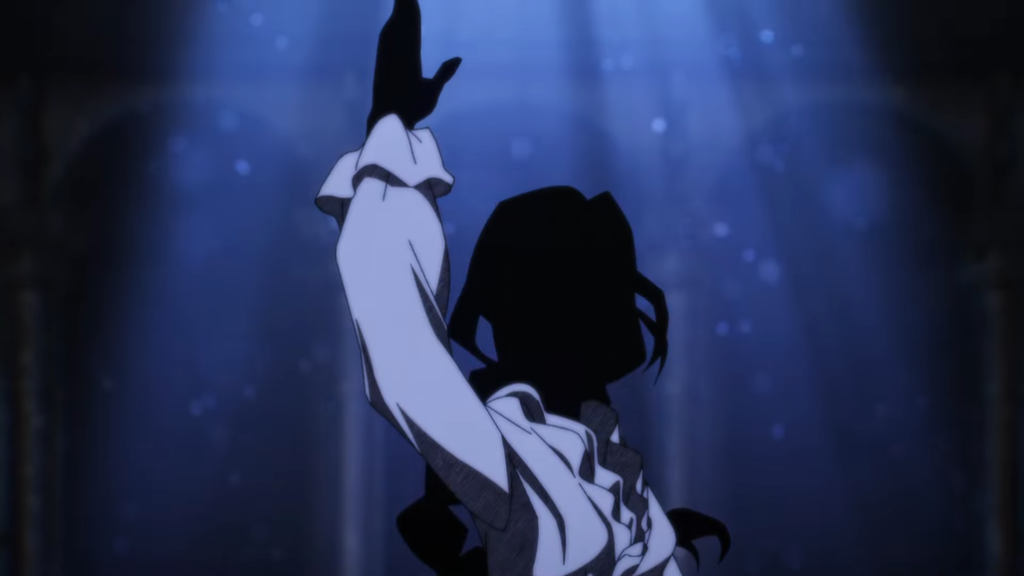
From the very first episode, we’ve been following living doll Emilico and her Shadow mistress Miss Kate as they try to unravel the mysteries of Shadows House while not arousing the suspicions of the adults or the Star Bearers (the pairs who have been appointed to keep watch over the children’s wing). Kate is a quiet rebel; intelligent and restless (and considerable soot powers) she’s determined not to help perpetuate the tyrannical reign of Lord Grandfather. Yet the deeper Kate and Emilico delve, the more sinister and tragic the revelations become. What has become of Christopher? Why are there so many scorches? Who is the hooded phantom glimpsed flitting about whenever trouble strikes? And if this makes the series sound too gloomy, it’s lightened by moments of humour, as when Kate’s Shadow admirer, John earnestly tries his hardest to impress her, while his ‘face’ Shaun is the brains of the pair and, when snatching the odd moment to talk with Emilico, reveals just how much he has worked out about the living dolls’ true origins. But as for their true purpose…?
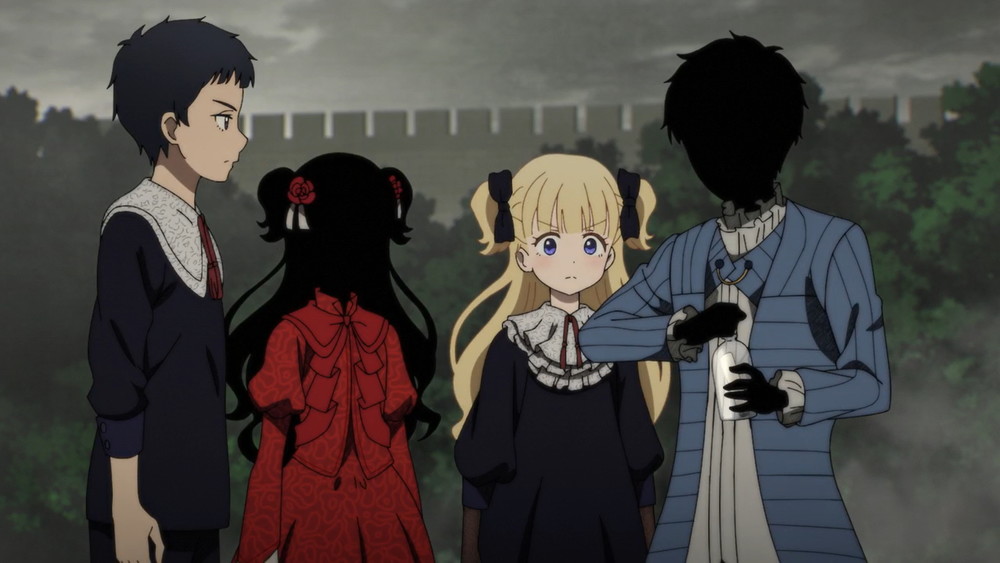
The animation has stayed consistently good throughout the season. It’s enhanced by the score by Kenichiro Suehiro (who also composed the achingly beautiful ED “Masquerade” sung by ClariS) which is just right for the uneasy atmosphere of the vast mansion with its shadowy, echoing corridors and the cloudy skies outside that make the gardens seem equally menacing. Many of the secrets of Shadows House are revealed in these episodes and I won’t spoil them, I’ll only say that if you like a well-written gothic horror story that’s subtle yet chilling, you’ll love this. A Season 3 would be wonderful.
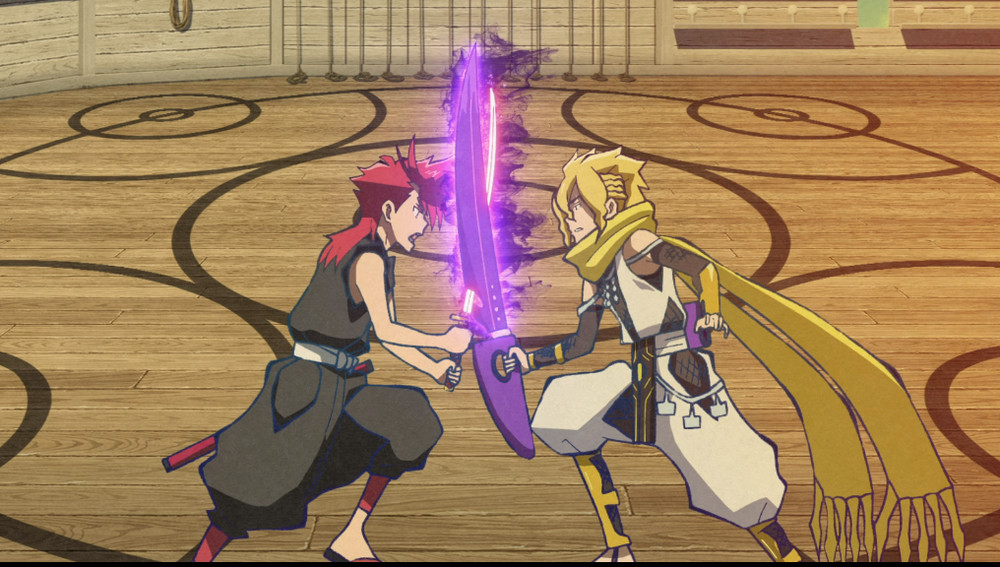
I watched Shine On! Bakumatsu Bad Boys (Crunchyroll) to the end but it didn’t really deliver the alternate historical buzz I was hoping for, in spite of all its Shinsengumi credentials. If the title promises bad boys, I wanna see ’em being bad! The plotting left a great deal to be desired, falling back on predictable situations and confrontations, even though there was considerable potential in the initial premise. It doesn’t stand up well to the 2003 Peacemaker which captured the swagger of the legendary Shinsengumi so much more memorably; even the incorporation of a grungy metal ED doesn’t compare with the impact of the 2003 series use of Hav’s “Hey Jimmy” as ED. (And, given the very recognizable style of the character designs by Shaman King mangaka Hiroyuki Takei, I kept expecting Heisuke Todo to transform into Yoh Asakura.)
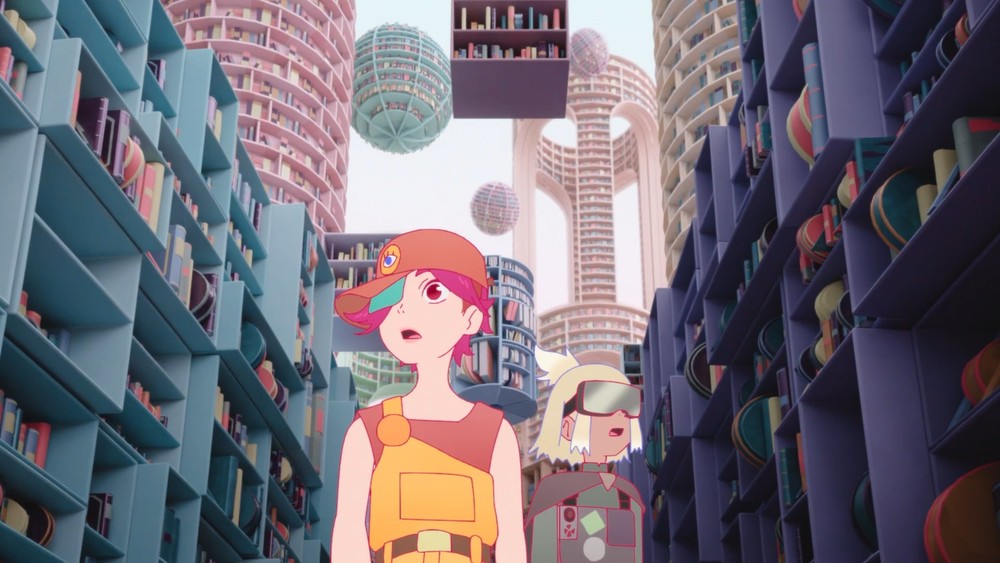
My main disappointment (and there’ve been quite a few in this lacklustre season) is Yurei Deco (Crunchyroll) which promised much (it’s from Science Saru) and gave us… many trippy pastel-coloured sequences in a futuristic AI-driven society filled with references to Mark Twain’s writings that ended up delivering very little except for much head-scratching. Was it necessary to know all the Mark Twain references to understand the plot? Where was the plot going, at the end of the day? Everything was rather too neatly and nicely sewn up in the final episode but to what end? ANN’s reviewer, the estimable James Beckett, has been really helpful for us non-Twain readers in giving explanations to everything Mark Twain-related – but, at the end of the day, the borrowed names seemed to be there to hang a plot on but not to deliver any deep or hidden relevance. The synthesized OP is attractive although the pastel kaleidoscopic patterns aren’t great for migraine-sufferers.
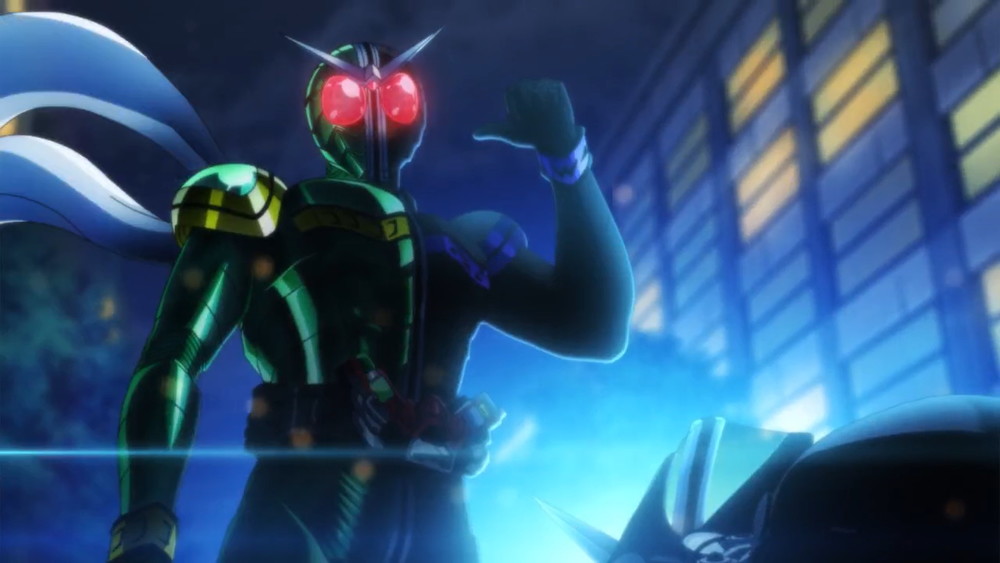
The most fun for me has come from late-starter Fuuto PI which is basically Kamen Rider W and has proved worth the wait. The transition from live-action Kamen Rider tokusatsu to animation is stylishly done (proper old-stye animation too!) and the buddy/buddy pairing of would-be hard-boiled detective Shotaro and brains Philip who together become crime-fighting Kamen Rider W ticks all the right boxes. It honestly doesn’t matter if you haven’t got all the background to enjoy Fuuto PI as it proceeds at a lively pace but inserts the necessary information at suitable moments (even if somewhat unsubtly). The ED is another of those fun retro dance numbers, “Tsumi to Batsu to Angura” by Mitsuru Matsuoka, in which the cast (animated) perform a slick routine, a little reminiscent of the OP in The Vampire Dies in No Time (but with no vampire disintegrating into a pile of sand).
Onosume
Looking back on this year’s summer season, I’d say it’s been an overall positive showing despite struggling to keep up with things with the return of some in-real life events and general life getting in the way!

Returning first to shows I picked out in our season preview, Tokyo Mew Mew New has, I think, delivered what it set out to do, modernising an old classic and successfully pulling in both nostalgia-hungry fans and new audiences. In terms of how the series has progressed I don’t have too much new to say, as it stayed true to its traditional magical girl roots, offering a goofy slice of fun every week that saw Ichigo and the rest of the Mew Mews taking on the mysterious aliens who are trying to destroy the planet, plus a cheesy dash of romance. Tonally it seems to sit in-between the likes of Pretty Cure and Sailor Moon, and while I sure prefer the former (I’ll take a goofy comedy over a soppy romance any day), I still think it makes the best out of both worlds. You’ve got the pantomime trio of villains and a classic monster-of-the-week format that works really well, plus interesting relationships between the main cast members, from the Mew Mews themselves and their bosses (if that’s the right word for them?) Ryou and Keiichiro, to the main romance between Ichigo and Aoyama.

Animation-wise, Yumeta Company and Graphinica do a pretty decent job, with the series looking bright and colourful, while action sequences are impactful with some good use of CG for the Mew Mew’s special attacks. Interestingly for a magical girl series however, there’s a lack of emphasis on the transformation sequences, which on one hand is good as it shows they don’t have to fill for time (something that Precure in particular is guilty of using them for), but on the other hand it’s odd to not see a genre staple every week. That said, it can feel a little rushed in places, with certain events happening faster than I would have expected them to. While I’ve not read the source material, I do know it is relatively short in length at 7 volumes, so I do wonder if they have a specific number of episodes they are trying to target for the entire thing. There’s also some slight controversy around some of the translation, although as the translator of the series revealed, that’s actually down to Kodansha themselves.

Overall though, Tokyo Mew Mew New has had a pretty good start and is definitely worth picking up if you’re a fan of magical girl shows. If you haven’t been keeping up week-on-week, then there’s plenty of time to catch up before its second season airs next spring.
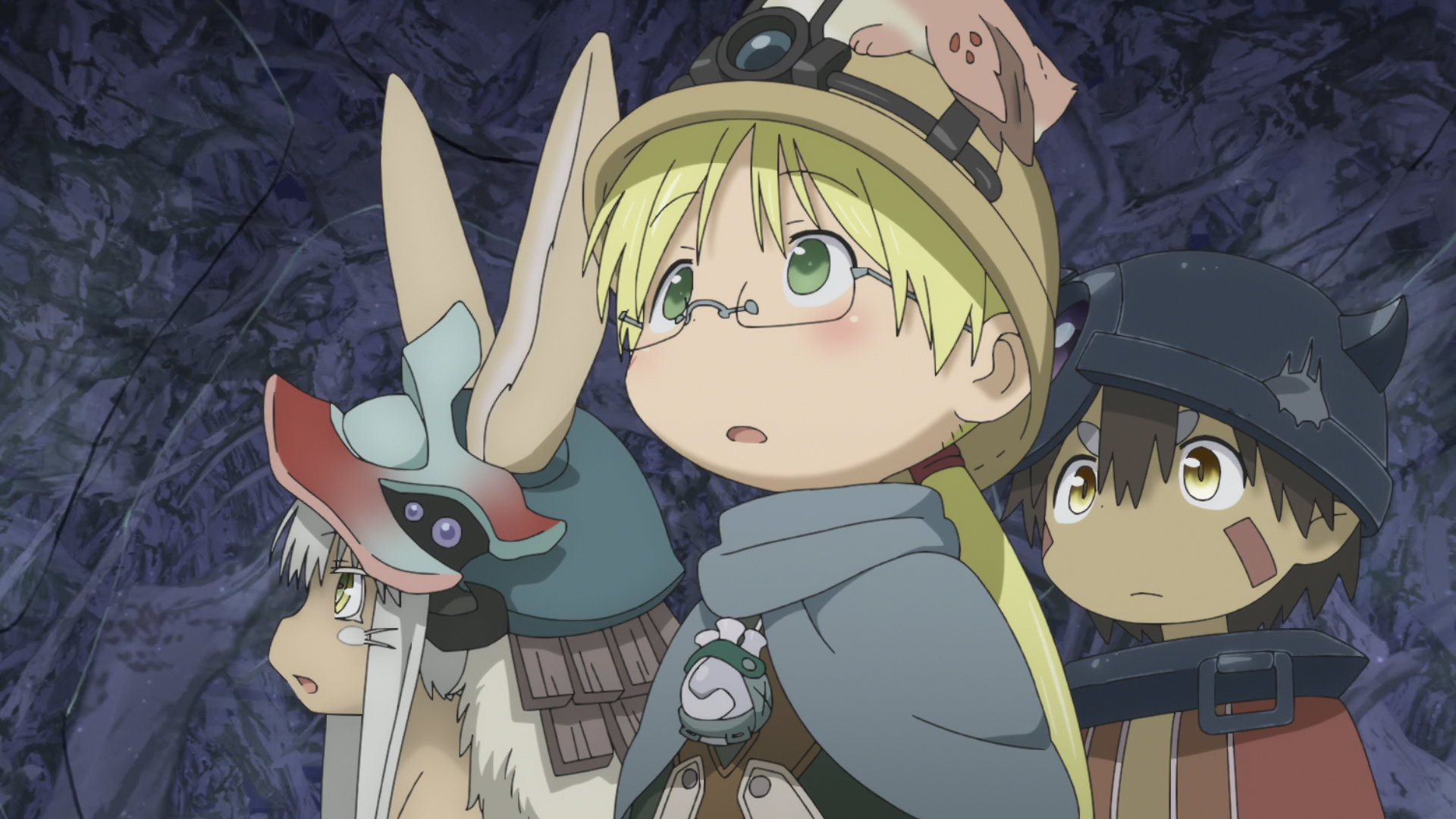
Moving in the complete opposite direction now, we have Made in Abyss: The Golden City of the Scorching Sun, which has highly impressed me across the board with its story, characters, visuals, and music, despite it being difficult to watch sometimes. Moving away from the exploration-focused first season, this second season builds more on the themes of the movie, giving us a more character-oriented story that is rooted in survival horror. These elements mainly come from the plot’s focus on the Hollows that have a built a village in the 6th layer, with the story of how they came to be sort-of being told in parallel to current events. I actually really liked this approach as it continually kept you guessing, although I wasn’t quite prepared for how horrible and gruesome it would turn out to be. I think some of this might be too much for more casual viewers of the series, but I’m sure fans will not be able to look away, as it’s like having a deadly car crash unfold in front of you.

It’s not just about the shock value though, as there’s some genuinely good character development in here, as we not only get to continually uncover more about the villagers and their predicament, but also peek into Reg’s past before his memory was wiped. On the surface he’s very much the same character, but when we come to some of the more difficult moral choices that Reg has to make, you can really see how his journey with Riko has changed him. Riko herself sadly doesn’t get much to do and is more a point-of-view character, while Nanachi falls victim to the allures of the village itself, spending a lot of the series in a coma. In comparison, it’s outside of the main trio where the series really shines, with characters like Maaa, Moogie, Vueko and Faputa stealing the show in some form or another.
As I mentioned in the preview, the series is still as visually and audibly stunning as it always has been, with the music in particular catching my attention throughout. You’ll hear some familiar themes return, but Penkin’s new compositions do stand up to the work he’s done for the series so far and fit in with the on-screen action perfectly.

Overall, despite some of its content being incredibly hard to watch, I still immensely enjoyed watching Made in Abyss’s second season, and I’d recommend any existing fans who have not seen it yet to dive right in as it’s definitely worth sitting through.
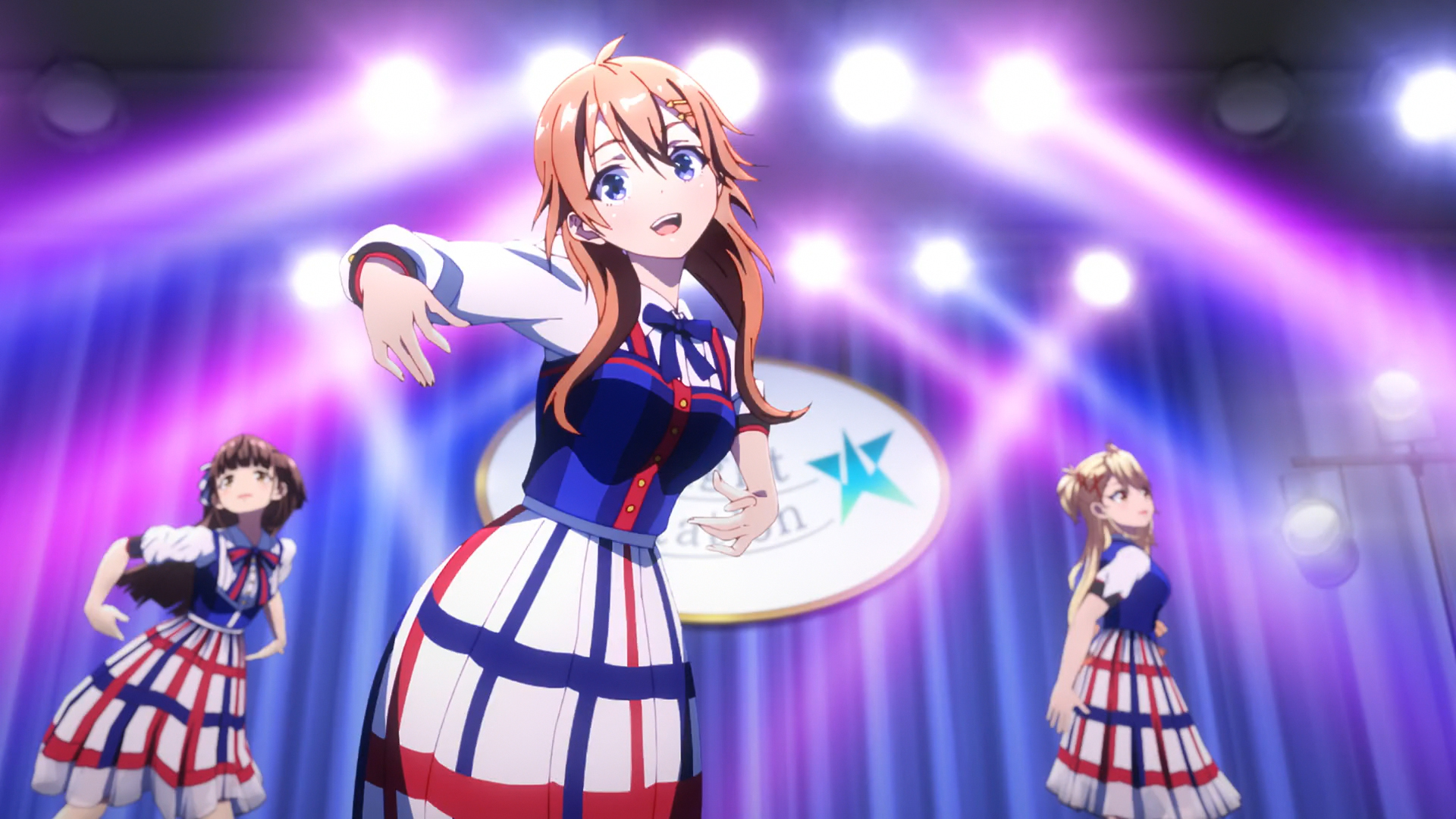
Speaking of music, it wouldn’t be me if I didn’t mention an idol show or two and I’ve had three that I’ve been watching. While I’ll save Love Live! Superstar!! Season 2 for another time (Vimeo pay-per-view hasn’t been the best experience in the world to watch a series), I’d actually like to highlight SHINE POST, a show born out of one of those mixed-media projects and tied to an upcoming gacha game which has actually been really on form throughout its run. Focusing on a struggling idol group called TiNgS, SHINE POST follows its three main members, Kyouka, Haru and Rio, as they are assigned a new manager by their agency in order to take them to the top of the idol world. While it initially doesn’t appear to be anything special, SHINE POST actually does a great job of representing the struggles of those at the bottom of the idol industry, as we see TiNgS barely being able to get people to turn up to their shows, and then barely pull them off due to being either untrained or lacking the confidence to show their true potential. As the series gathers pace, we gradually get to see how each of the three main characters grow, rise, and fall, and it’s really easy to get pulled into their natural charm – it only took me a couple of episodes to really start rooting for their success thanks to their vulnerabilities being on show from the get-go, and each of them appears earnest enough in trying to move past them.
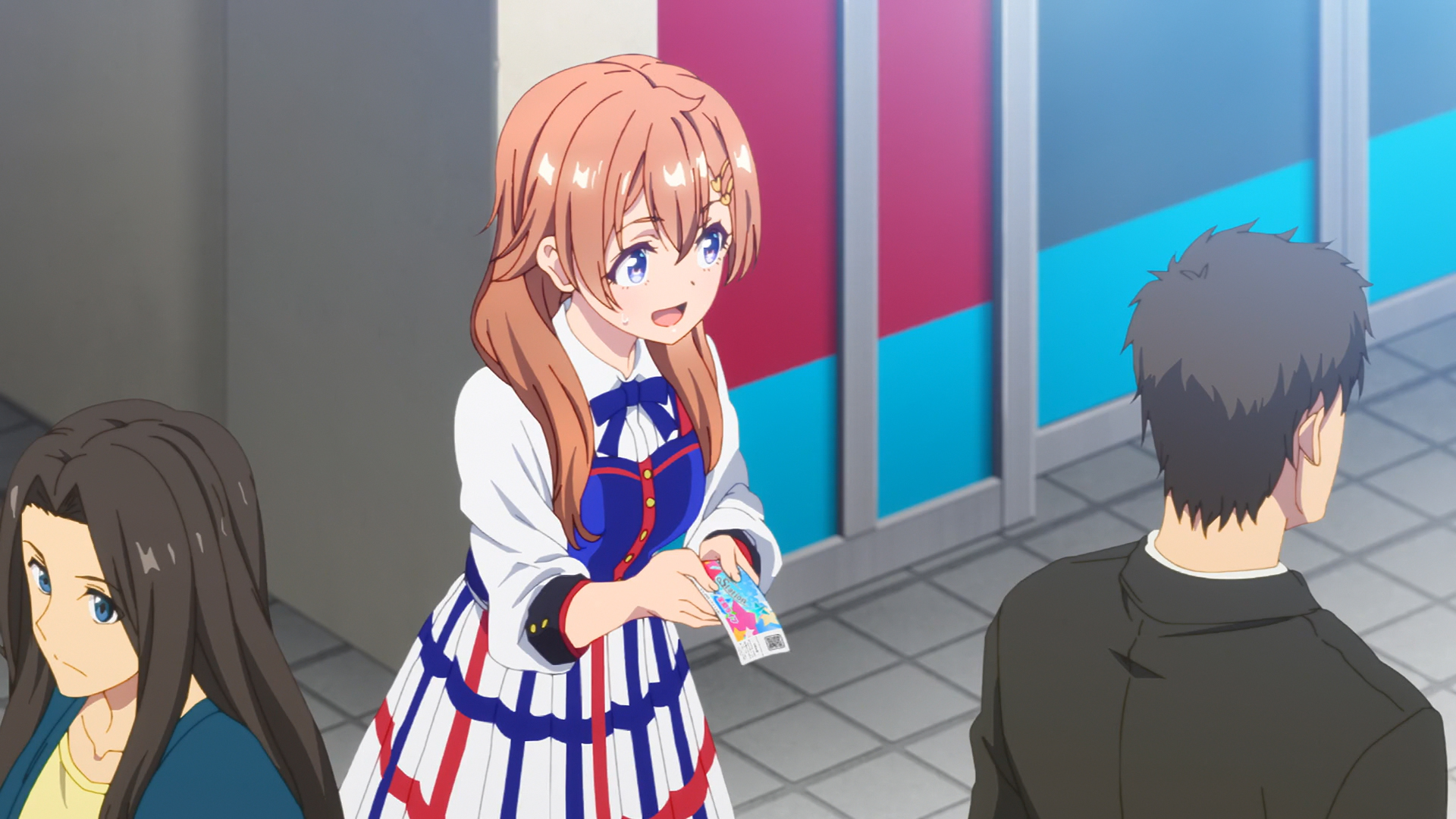
There’s plenty of great moments and surprises throughout the series as well, with the show being very good at hiding certain details then springing them upon you when you least expect it. There are also some slight fantastical elements with the group’s manager, Naoki, getting the ability to see when people are lying. It can however sometimes come across as a bit unnecessary, as there’s enough visual clues to show how uncomfortable a character is in a certain situation.
Musically it doesn’t stand out as much as other more recent idol shows, but it’s still pretty good stuff with a couple of really strong performances. It picks up visually in those too, homing in on the finer details like on-stage formations and the choreography for each song. Elsewhere it’s not quite as impressive, but it still does the job and to be honest I appreciate it going for a more technical approach and accurately showing off the dance moves rather than trying to look lavish.
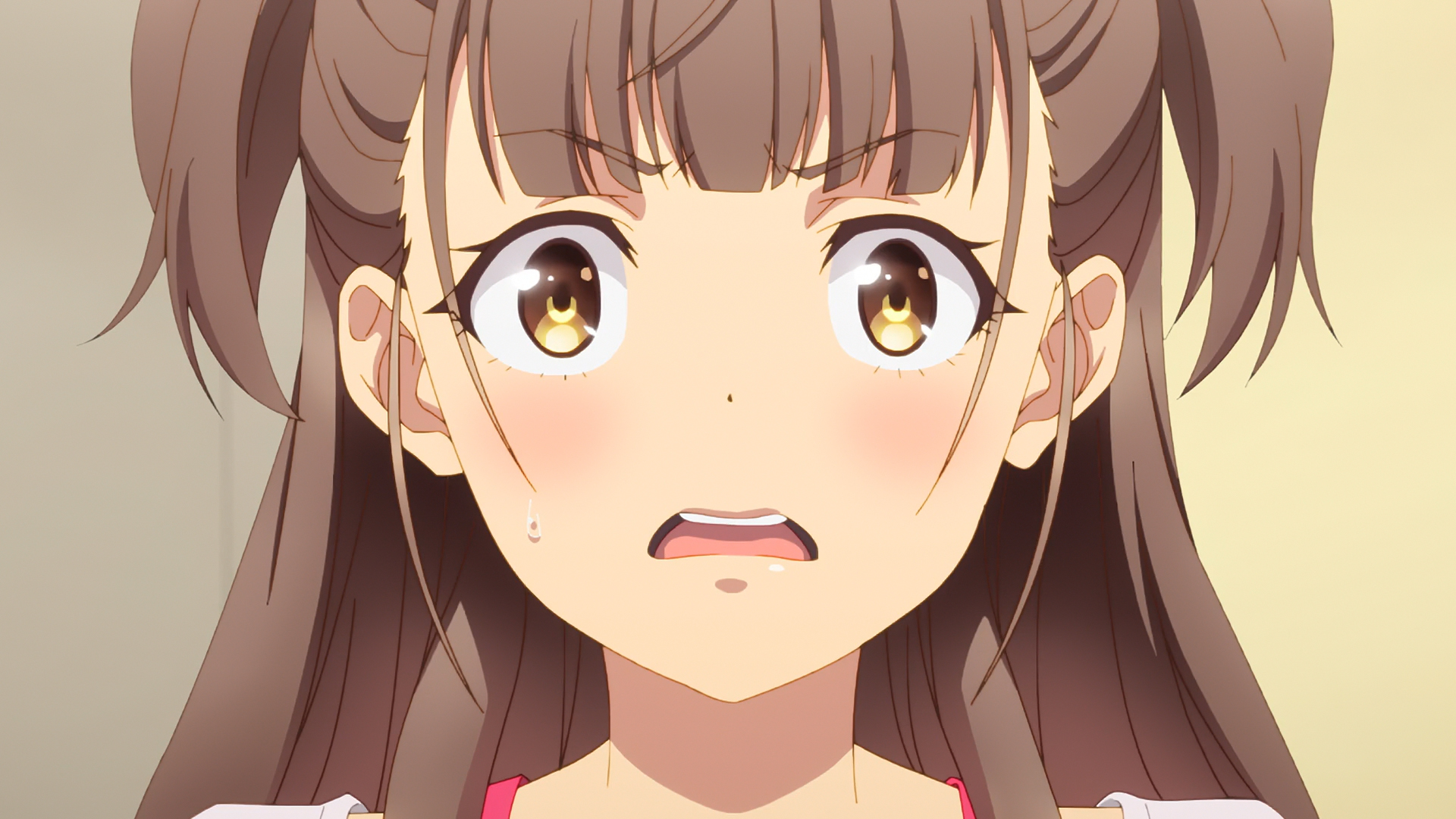
With still a couple of episodes left to air as I write this, SHINE POST might not have revealed its full hand, but I think I’ve got enough of a handle on it to say that if you’re interested in seeing a more realistic depiction of what the idol industry is like, then this is definitely worth picking up.
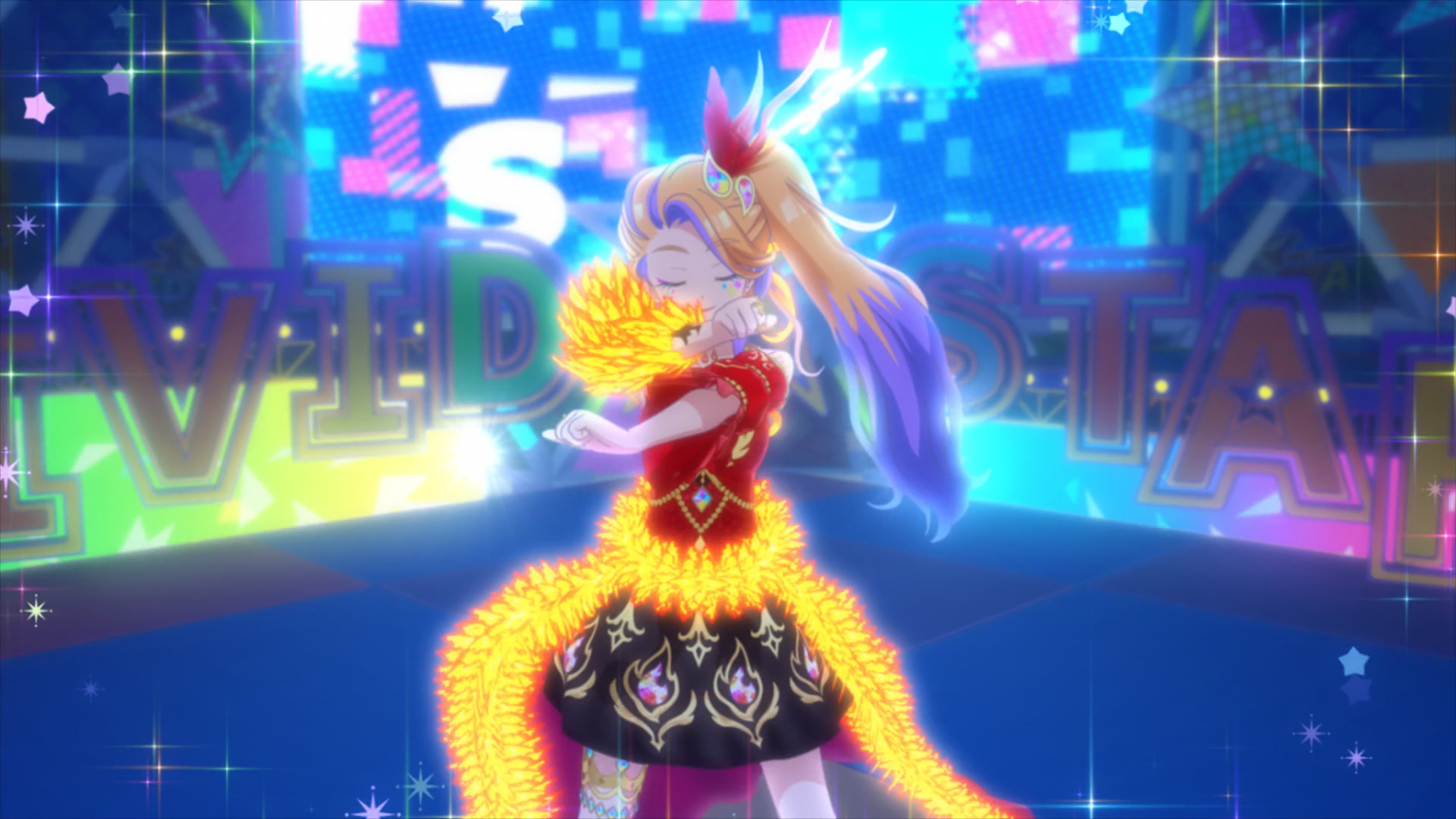
Finally, I just want to make a quick shoutout to Waccha PriMagi!, which is just in the process of wrapping up its main storyline. While I don’t think it’s always hit the highs of previous entries in the Pretty franchise, with the lack of new songs and a middle that dragged with an elongated training arc, it’s still been a pretty fun ride, delivering a good mix of the franchise’s trademark comedy and dramatic moments. That has particularly been the case in this latest arc, as it gathers everything from the past 40-odd episodes into what is shaping up to be a barnstorming finale. While it’s a shame that it’s not continuing into a second season like some of the other entries in the franchise, hopefully it isn’t too long before we get more considering the arcade game is getting an updated version later this year.
Tokyo Mew Mew New, Made in Abyss: The Golden City of the Scorching Sun, SHINE POST, and Waccha PriMagi! are all available for streaming on HIDIVE.
HWR
I found this season had some very strong continuations and also some more forgettable original outings.

The Yakuza’s Guide to Babysitting, whilst providing a mostly warm story involving the bond between a crime boss’ daughter, Yaeka, and her caretaker Tooru Kirishima, better known as “The Demon of Sakuragi”, also fell a bit flat towards the conclusion with the more dramatic episodes not hitting quite as hard as they should. With that said though, the series still delivered some effective emotional episodes including Yaeka coming to terms with her mother’s condition in intensive care, and also making new friends. It’s just a shame for me that Babysitting couldn’t quite stick the landing with its final few episodes.
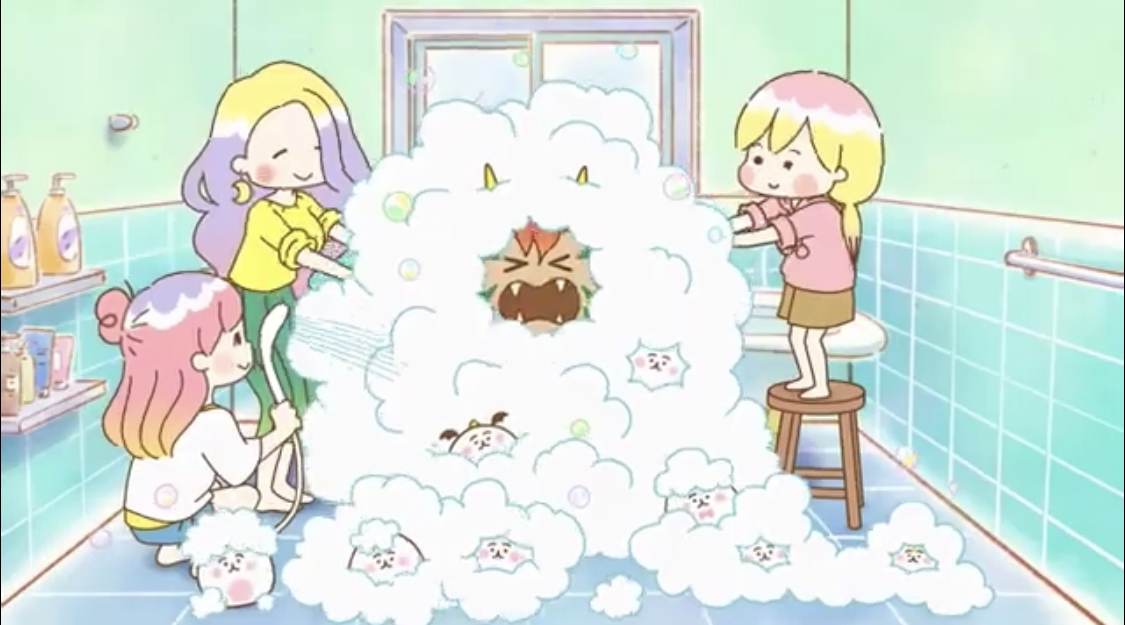
Chimimo, however, maintained its initial premise and smaller segmented stories fairly well as the growing familial bond between demon Jikogu and the Onigami Sisters was nicely explored, as were new side characters like Jikogu’s senpai from hell or youngest sister Mei’s male friend. The little dumpling-like beings, aka the titular Chimimo, were also rather cute, and didn’t become a Minions’ situation of being obnoxious and intrusive little buggers either. The series wasn’t exactly the best from this season, but it did provide a nice little slice of fun and that, sometimes, is just what I’m looking for on an evening of watching anime.
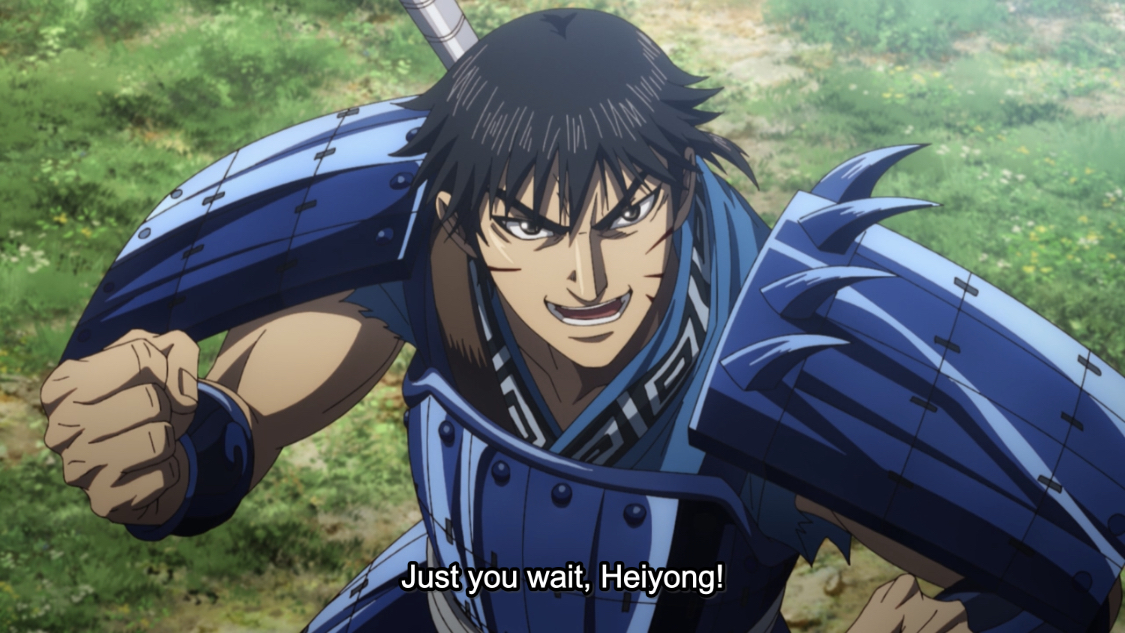
Looking at continuing series, both Kingdom Fourth Season and Overlord IV were impressive entries, both playing to their respective series’ strengths. Kingdom’s Fourth Season continued to build upon the last with final episodes that centred upon a massive betrayal being quashed, and the high aims of Zheng Ying being matched in enthusiasm by Xin, who has rather grown on me as a protagonist.
Overlord IV, meanwhile, maintains the brutal yet strategized approach that Ainz Ooal Gown takes, involving diplomatic envoys and yet more kingdom conquests. The final episode left the series on a note that awaits the upcoming film, which I am eager to watch.
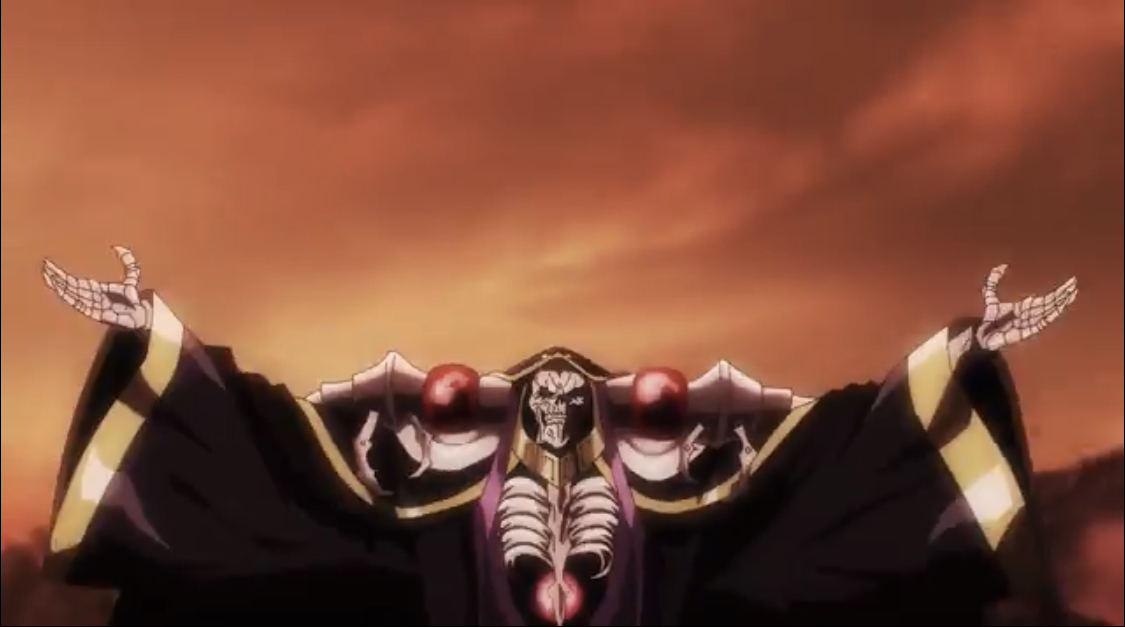
Kingdom Fourth Season, Overlord IV & The Yakuza’s Guide to Babysitting are available to steam on Crunchyroll whilst Chimimo is available on HIDIVE.


